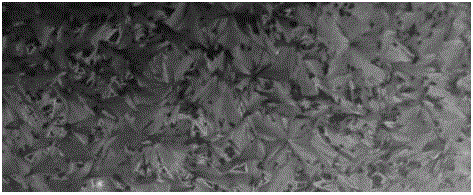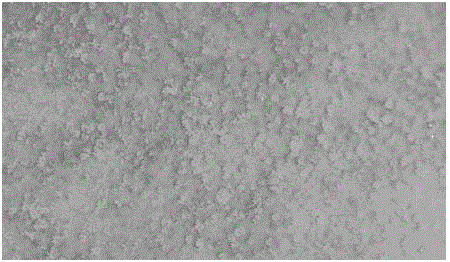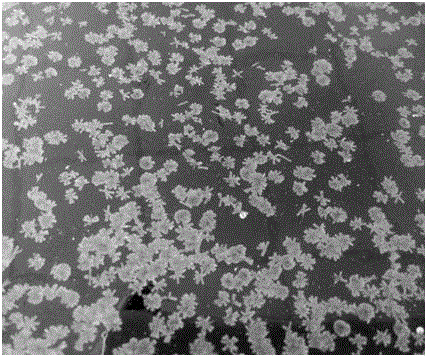Preparation method for architectural decoration flambe art ceramic tile
A technology for architectural decoration and artistic ceramics, applied in the field of ceramics, can solve the problems of unfavorable development and high energy consumption, and achieve the effects of reducing firing costs, obvious economic benefits, and shortening firing time
- Summary
- Abstract
- Description
- Claims
- Application Information
AI Technical Summary
Problems solved by technology
Method used
Image
Examples
Embodiment 1
[0061] A method for preparing architectural decorative kiln art ceramics, comprising the following steps:
[0062] A. Ingredients: Weigh the green body raw materials according to weight percentage, and the green body raw materials are composed of the following weight percentage components:
[0063] Kaolin 10%
[0064] Weathered sand 7%
[0066] Low fire clay 32%
[0067] Refined white sand 12%
[0068] Waste base powder 4%
[0069] Black talc 7%.
[0070] B. Pulping: Weigh the raw materials according to the ratio in A, and put them into the ball mill to grind the mixed raw materials according to the ratio of material: ball: water = 1:2:0.35; after ball milling, the 250-mesh sieve sieve balance is 1.2~ 1.7% slurry.
[0071] C. Powder making: the slurry obtained in step B is made into powder through a spray dryer, and then aged for 2 to 3 days.
[0072] D. Press molding: press the aged powder obtained in step C into brick adobe.
[0073] ...
Embodiment 2
[0100] The blank is composed of the following components by weight: 15% kaolin, 12% weathered sand, 35% potassium feldspar, 22% low-fired clay, and 7% refined white sand. Waste base powder 7%, black talc 2%;
[0101] The bottom glaze is composed of the following components by weight: 19% potassium feldspar, 10% porcelain sand, 10% kaolin, 5% zinc oxide, 10% calcined talc, 15% barium carbonate, 8% dolomite, and 11% calcium carbonate , calcium phosphate 10%, alumina 2%
[0102] The surface glaze is composed of the following components by weight: potassium feldspar 23%, porcelain sand 5%, kaolin 10%, zinc oxide 17%, calcined talc 10%, zirconium silicate 10%, titanium oxide 18%, glass powder 5% %, cobalt oxide 2%.
[0103] Other steps are the same as in Embodiment 1.
Embodiment 3
[0105] The blank is composed of the following components by weight: 12% kaolin, 10% weathered sand, 30% potassium feldspar, 28% low-fired clay, and 9% refined white sand. Waste base powder 6%, black talc 5%;
[0106] The bottom glaze is composed of the following raw materials in weight percentage: albite 16%, porcelain sand 15%, kaolin 7.5%, zinc oxide 6.5%, calcined talc 7.5%, barium carbonate 16%, dolomite 7%, calcium carbonate 16%, Calcium phosphate 5%, alumina 3.5%;
[0107] The surface glaze is composed of the following raw materials in weight percentage: 22% albite feldspar, 8% porcelain sand, 8% kaolin; 22% zinc oxide; 5% calcined talc; 15% titanium oxide, 12% zirconium silicate, and 8% glass powder , coloring agent 1.2%.
[0108] Other steps are the same as in Embodiment 1.
[0109] The crystal flower detection of kiln-changing art ceramic tiles is shown in the attached figure.
PUM
 Login to View More
Login to View More Abstract
Description
Claims
Application Information
 Login to View More
Login to View More - R&D
- Intellectual Property
- Life Sciences
- Materials
- Tech Scout
- Unparalleled Data Quality
- Higher Quality Content
- 60% Fewer Hallucinations
Browse by: Latest US Patents, China's latest patents, Technical Efficacy Thesaurus, Application Domain, Technology Topic, Popular Technical Reports.
© 2025 PatSnap. All rights reserved.Legal|Privacy policy|Modern Slavery Act Transparency Statement|Sitemap|About US| Contact US: help@patsnap.com



